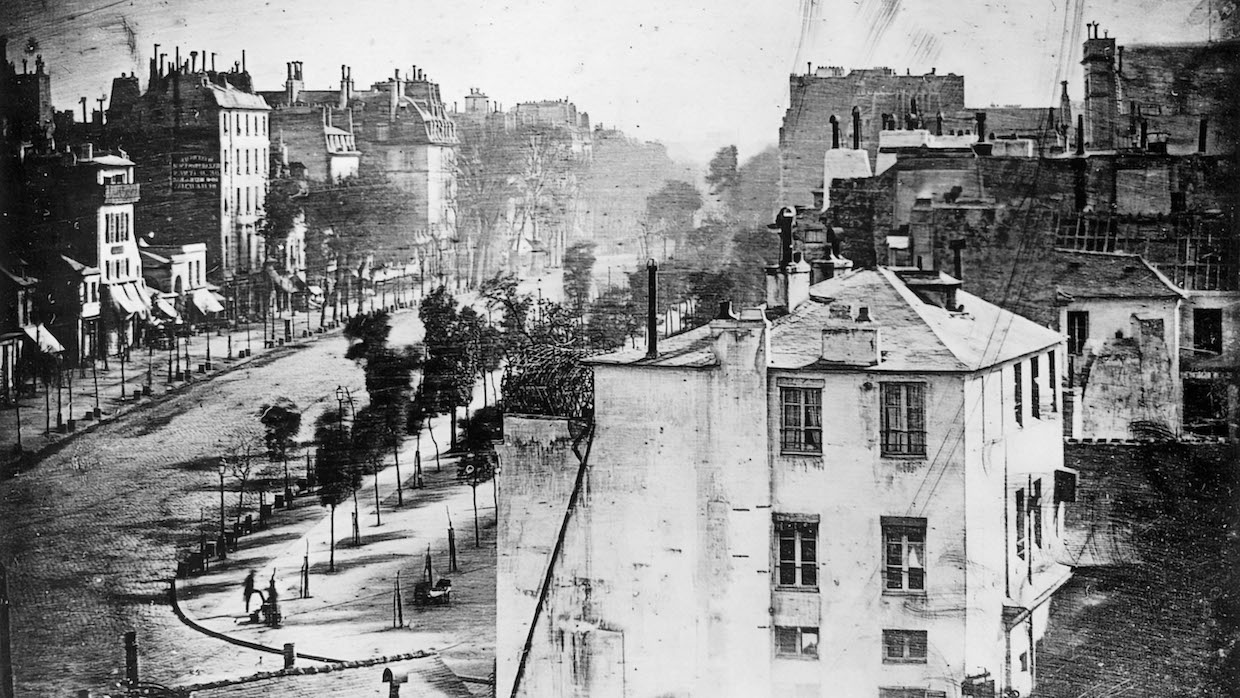 Back to selection
Back to selection
“Our Material Spans 150 Years of Camera Technology”: DPs Axel Danielson and Maximilien Van Aretryck on Fantastic Machine
 Fantastic Machine, courtesy of Sundance Institute.
Fantastic Machine, courtesy of Sundance Institute. Axel Danielson and Maximilien Van Aertryck are co-directors, producers, cinematographers and editors of Fantastic Machine, their documentary that serves as a “meticulous dissection of image-making and a mapping of its movement through society.” Below, the duo discuss how they approached their duties as DPs on the film, including how they view that role as distinctly hunter-like.
See all responses to our annual Sundance cinematographer interviews here.
Filmmaker: How and why did you wind up being the cinematographer of your film? What were the factors and attributes that led to your being hired for this job?
Danielson & Van Aretryck: As directors, we always start with the image in mind. We look at the role of the photographer almost like that of a hunter, capturing moments of life. In that regard the most important thing is to know where the camera should be placed and when to press the button.
Filmmaker: What were your artistic goals on this film, and how did you realize them? How did you want your cinematography to enhance the film’s storytelling and treatment of its characters?
Danielson & Van Aretryck: Fantastic Machine is 90% archival footage. There are three scenes in the film which we filmed ourselves. They all follow a method we have developed over several films where we use the camera to capture human behaviour.
We approach certain scenes as if it was a study, we create set-ups in which we let people interact with it. A diving platform in Ten Meter Tower, or a large camera obscura in Fantastic Machine for example. Setting up the cameras becomes a decision of which perspectives we want to cover to best study how people behave in the set-up.
Filmmaker: Were there any specific influences on your cinematography, whether they be other films, or visual art, or photography, or something else?
Danielson & Van Aretryck: We are very fond of the still photographer August Sander and his depiction of social classes during the Weimar Republic! His book People of the 20th Century, which we recently discovered, is amazing.
Filmmaker: What were the biggest challenges posed by production to those goals?
Danielson & Van Aretryck: The digital age means you can record as much as you like, as all decisions are basically pushed forward to the editing. That’s a big possibility that can easily turn into a problem when you find yourself with too much footage.
Filmmaker: What camera did you shoot on? Why did you choose the camera that you did? What lenses did you use?
Danielson & Van Aretryck: The choice of cameras was very practical, it had to be small so we could change its position easily, as well as blend with the surroundings more easily, so as to not constantly make its presence felt and influence our subjects.
Filmmaker: Describe your approach to lighting.
Danielson & Van Aretryck: We try as much as possible to use natural light that is available on set.
Filmmaker: What was the most difficult scene to realize and why? And how did you do it?
Danielson & Van Aretryck: Probably the brain scan scene, because one of us was in Paris while the other was in Gothenburg in the MRI :-)
Filmmaker: Finally, describe the finishing of the film. How much of your look was “baked in” versus realized in the DI?
Danielson & Van Aretryck: Our material spans 150 years of camera technology, so the look was always “baked in” so to say. In the color grading we went with each material’s character.
TECH BOX
Film Title: Fantastic Machine
Camera: Panasonic Lumix GH5, Blackmagic Pocket Cinema Camera
Lenses: Sigma Art
